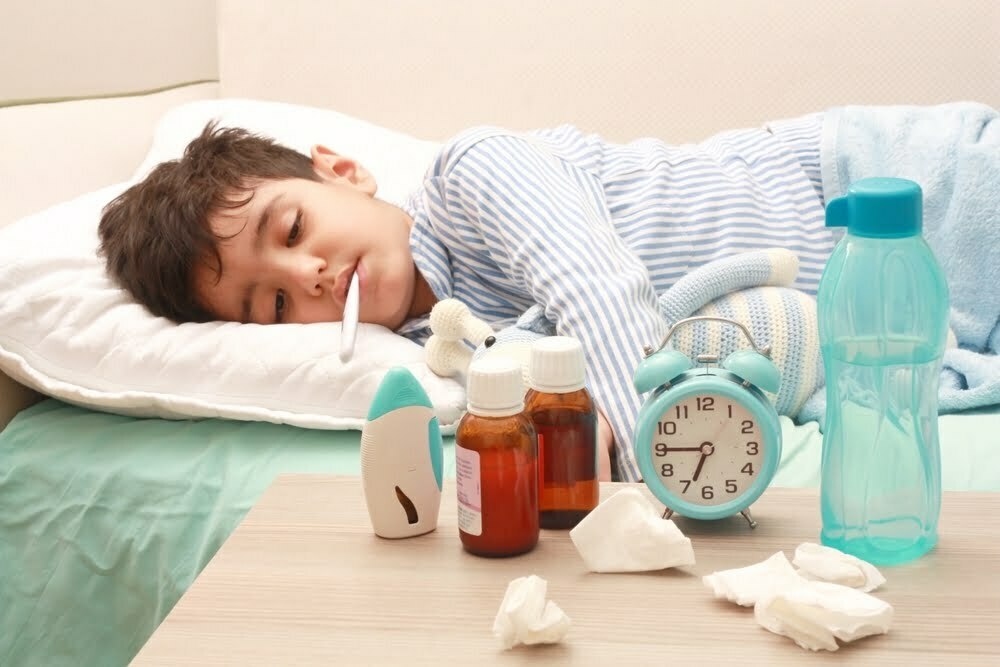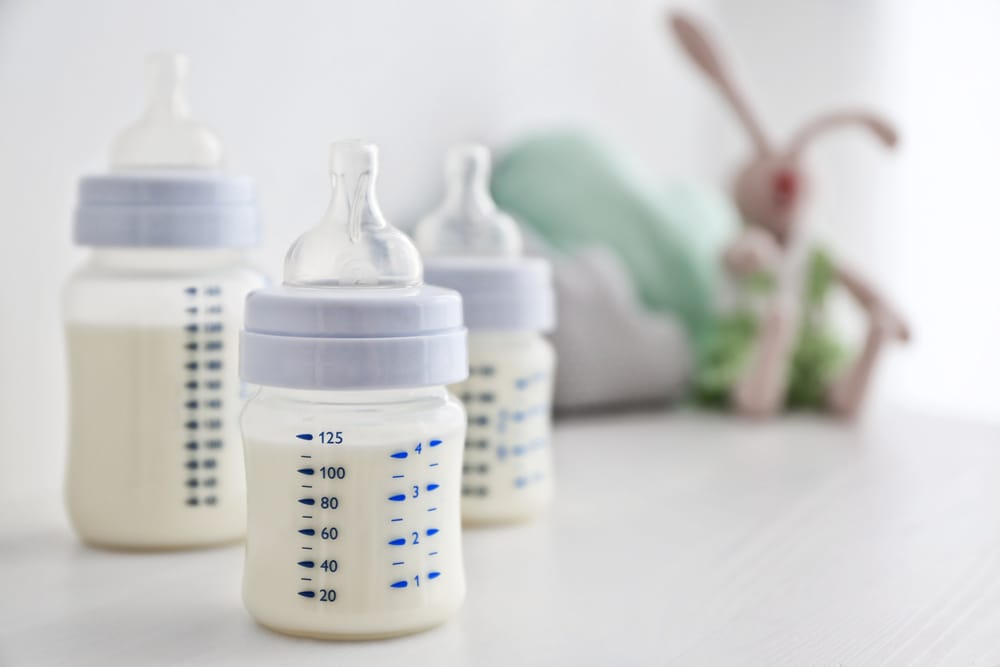
Does your child get dry, itchy and inflamed skin patches? Well-child checkups provide an excellent opportunity for families to discuss concerns about eczema with their Cumming pediatrician, and to receive a personalized treatment plan. Although there is no cure for eczema, there are effective techniques that help manage the condition. To get started, it’s worth familiarizing yourself with the basics of eczema symptoms and treatments.
Who Gets Eczema?
Eczema is the most common skin problem treated by pediatric dermatologists. About 65% of patients develop symptoms before age one, and about 90% of them develop symptoms before age five. Many babies outgrow eczema by age 4. Some children outgrow eczema by the time they are young adults, although their skin remains dry and sensitive. A few may have it all their lives, but there are ways to relieve the symptoms. Eczema often runs in families with a history of eczema or other allergic conditions such as hay fever and asthma. It is not contagious.
Symptoms of Eczema
Eczema is a chronic skin problem that causes dry, red, itchy skin. It is also called atopic dermatitis or AD. Because eczema is a chronic skin problem, these symptoms can come and go. With these symptoms, we also included some eczema tips as well. There are times when the symptoms are worse (called exacerbations or flares) followed by times when the skin gets better or clears up completely (called remissions). The symptoms of eczema are different with each child. Common symptoms include dry, red, itchy skin and rashes. These rashes can be oozing or very dry. Eczema can appear anywhere on the body or in just a few areas:
- In babies, a rash often appears on the face and scalp.
- In younger children, a rash often appears in the folds of the elbows and knees.
- In teens and young adults, a rash often appears on the hands and feet.
The chronic inflammation caused by the dermatitis can result in post-inflammatory hypo- or hyperpigmentation (white or darkened patches of skin), which can last for many months.
How to Prevent Eczema Flare-Ups
One of the most helpful things you can do is to prevent flare-ups before they happen.
- Keep your child’s skin moisturized. Moisturizing should be a part of your child’s daily treatment plan.
- Use fragrance-free moisturizers. Cream or ointment is more moisturizing than lotion.
- After a bath, gently pat the skin with a towel and then apply moisturizer to the damp skin.
- Apply moisturizer at least once a day or more often if needed. Moisturizer should be applied to the face and entire body.
- Avoid irritants.
Strategies for Dealing with Fabric and Soap Sensitivities
- Wear soft fabrics such as 100% cotton clothing.
- Avoid Bubble baths
- Use mild, fragrance-free body cleansers. “C etaphil”, “CeraVe”, “Aquanil”, “Aveeno Baby”
- Take short baths with room temperature water. Maximum 10 – 15 min
- Use mild laundry detergent with no dyes or perfumes. “All-free”, “Tide-free” or “Cheer-free”
- Skip using fabric softener in the dryer.
- Remind your child not to scratch. Scratching can make the rash worse and lead to infection. Also, the more your child scratches, the more itchy the area will be. Keep your child’s fingernails short and smooth, and try to distract your child from scratching.
- Allergies could be a cause of the eczema. Sometimes allergies, such as ones to food, pets, pollens, or dust mites (in bedding), can trigger the rash or make it worse. If your child’s eczema is caused by an allergy, avoid the trigger, if possible.
- Other things that can trigger a flare-up. These things include overheating or sweating, and stress.
- Use Sunblock daily
Best Eczema Treatment for Managing Symptoms
Your child’s doctor may recommend medicines to help your child feel better and to keep the symptoms of eczema under control. The type of medicine recommended will depend on how severe the eczema is and where it appears on the body. Eczema medicine can be given in 2 ways:
- Applied to the skin (topical)—Available as creams or ointments.
- Taken by mouth (oral)—Available in pill or liquid form.
Over-the-Counter Medication
- Topical steroids (hydrocortisone creams or ointments)—May help relieve itchy skin and decrease inflammation. They work best for mild eczema.
- Steroid-free topical itch relief— (Benadryl or Caladryl lotion, Cetaphil, CerVve, Aveeno eczema or Cetaphil Restoraderm) May give fast relief of dry, itchy skin with few side effects. Some of these medicines contain alcohol, which can cause a burning sensation.
- Oral antihistamines— like Benadryl (quick acting) or Zyrtec (longer duration) – May help relieve the itch.
- Bleach baths – May reduce the severity of atopic dermatitis and decrease the number of skin infections and need for oral antibiotics.
Prescription Medication
- Topical Antibiotics – (Bactroban) to decrease bacterial colonization and lead to fewer skin infections.
- Topical steroids—Used to reduce inflammation (redness and swelling) and stop the itch. They are the oldest and most widely used medications for eczema and are effective and safe when used as directed. Uncommon side effects, including thinning of the skin, stretch marks, or acne, may occur if not used as recommended for prolonged periods of time (greater than 4 weeks).
- Topical barrier repair devices – (Mimyx, Atopiclair, Epiceram and Hylatopic Plus). These are steroid –free medications that are used to increase skin hydration and reduce inflammation. Can be used infants > 6 months of age.
- Topical immunomodulators – (steroid-free medicines like Eucrisa Elidel or Protopic)—Used to reduce inflammation and stop the itch. They are a new class of medicines shown to work in 80% of studies done in children older than 2 years.
- Oral antihistamines—(Atarax, Xyzal) Come in several prescription types that may be more effective in certain children.
- Oral antibiotics—May be prescribed if there is a secondary infection.
- Oral steroids—Are rarely recommended, especially for young children, because they pose many health risks. Also, after patients stop taking these medicines, they often have rebound flare-ups.
Therapies for Moderate to Severe Eczema
Wet Wrap Therapy – Soak cotton wrap in lukewarm water, wring excess water. Bathe child and then pat skin dry with soft cotton towel. Apply daily topical steroid or other Rx cream immediately. Then place damp wrap over these areas to seal in moisture. You may apply dry layer/clothing on top. Leave wet wrap in place 2 hrs to overnight if needed.
Bleach Bath Therapy – Add ¼ cup household bleach to bathtub (40 gallons) of lukewarm water. Soak child in tub (neck down) for 10 minutes. Rinse if skin does not tolerate it well. Gently pat dry and immediately apply moisturizer. DO NOT do this more than 3 times a week, as it will over dry skin. DO NOT do this if skin is dry or cracked, as it will be painful. Be sure to speak with your urgent care pediatrician if your child experiences any painful side effects.
Additional Tips for Treating Severe Eczema
- Moisturize every day, even when the skin is clear
- Apply Moisturizer using downward strokes – do not rub in
- Do an extra rinse when washing clothes
- Wear soft, cotton, comfortable, loose clothing
- Keep fingernails short to prevent damage to skin
- Remember to re-order your creams
Eczema is a long-term condition that comes in cycles – getting worse and better. Good skin care with two treatments (moisturizer and flare cream/ointment) used well can control most children’s eczema.
Follow Your Treatment Eczema Plan
Stronger creams and ointments are safe if used correctly. Follow your Provider’s Eczema Action plan instructions.
Recognize a flare – a flare is a worsening of the eczema. Skin may become red, sore, itchy and crack/bleed.
Recognize infected eczema – If skin suddenly worsens, weeps, crusts – it could be infected. Apply topical antibiotic cream to these areas and see your provider if symptoms do not improve over the next 3-5 days.
Food allergy – While it is more common for children with eczema to have food allergy, it is not usually the cause of eczema.
Remember to hydrate – Drink plenty of water throughout the day to ensure that your skin stays hydrated.
By following the eczema action plan, you can effectively manage your child’s symptoms and improve their quality of life. Don’t hesitate to speak with your pediatrician via the Cumming pediatric telemedicine service or in-person appointments if you have any questions or concerns. With regular checkups and consistent treatment you can resolve much of the discomfort and frustration associated with eczema, helping build a happier, healthier life.
Visit Us in Cumming for Well-Child Care Services
Vickery Pediatrics offers well-child pediatrician services for newborns, toddlers, teens and young adults. We are conveniently located for families in Cumming, Buford, Dawsonville, Gainesville, Johns Creek, Sugar Hill, Suwanee and Forsyth County. For assistance, call (678) 990-2501 or request an appointment today.







